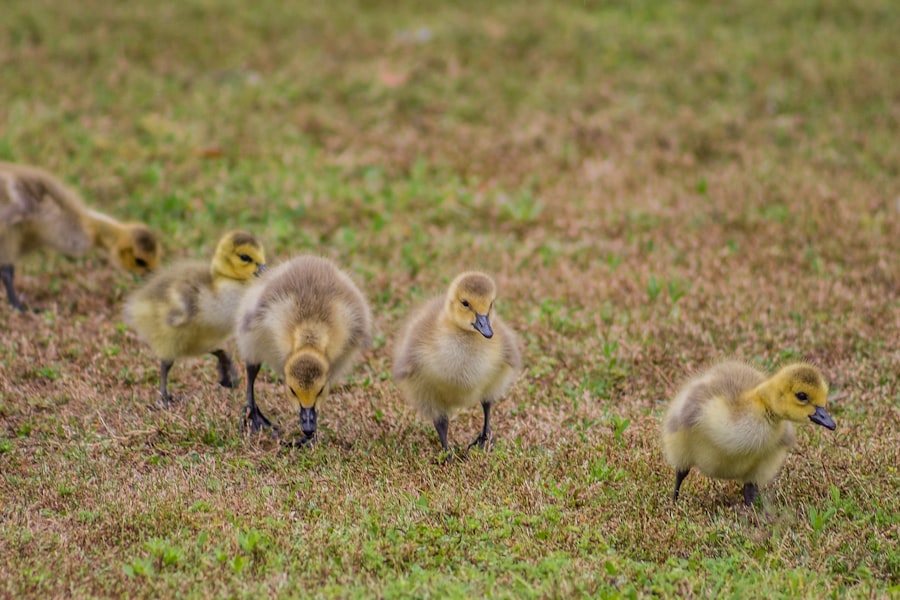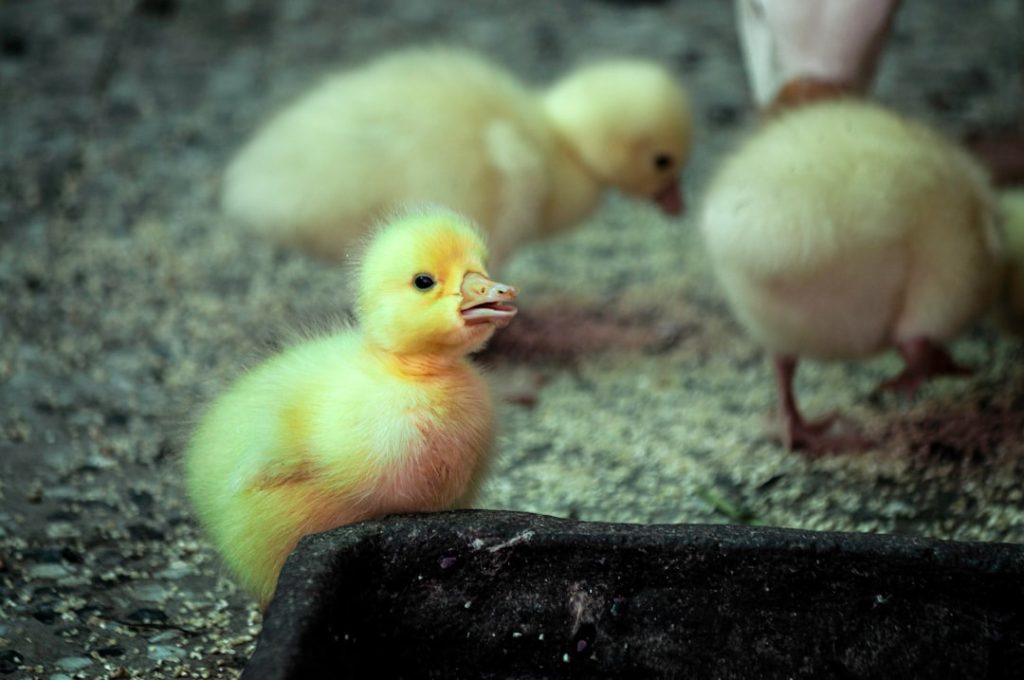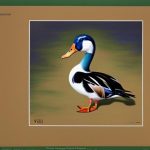Baby ducks, also known as ducklings, are adorable and charming creatures that have captured the hearts of many animal lovers around the world. There are numerous baby duck breeds, each with its own unique characteristics and traits. Whether you are looking to raise ducks for their eggs, meat, or simply as pets, it is important to understand the different breeds and their specific needs. In this article, we will explore the common and rare baby duck breeds, their characteristics and traits, and how to choose the right breed for your needs. We will also discuss the proper care and maintenance of different baby duck breeds to ensure their health and well-being.
Table of Contents
Key Takeaways
- Baby duck breeds come in a variety of types, each with their own unique characteristics and traits.
- Common baby duck breeds include the Pekin, Mallard, and Khaki Campbell, known for their popularity and availability.
- Rare baby duck breeds such as the Silver Appleyard and Saxony are less common but prized for their unique appearances and traits.
- Different baby duck breeds have varying characteristics such as size, color, and temperament, making it important to choose the right breed for your needs.
- Caring for different baby duck breeds involves providing proper housing, nutrition, and socialization to ensure their health and well-being.
Common Baby Duck Breeds
Among the most common baby duck breeds are the Pekin, Mallard, and Khaki Campbell. Pekin ducks are known for their large size, white feathers, and friendly disposition. They are excellent egg layers and are often raised for their meat. Mallard ducks, on the other hand, are the most widely recognized wild duck species. They have beautiful iridescent green heads and are known for their adaptability and hardiness. Khaki Campbell ducks are prized for their exceptional egg-laying abilities, often producing over 300 eggs per year. They have a khaki-colored plumage and are known for their friendly and sociable nature. These common baby duck breeds are popular choices for backyard enthusiasts and small-scale farmers due to their ease of care and versatility.
In addition to these breeds, the Runner duck is another common baby duck breed known for its upright posture and distinctive running gait. Runners come in various colors and are excellent foragers, making them a popular choice for pest control in gardens and orchards. They are also good egg layers and have a calm and friendly temperament, making them a great addition to any flock of ducks.
Rare Baby Duck Breeds
While common baby duck breeds are popular choices for many enthusiasts, there are also several rare and unique breeds that are worth considering. One such breed is the Cayuga duck, known for its stunning iridescent green-black plumage. Cayugas are excellent foragers and are prized for their flavorful meat and large, dark eggs. Another rare breed is the Saxony duck, which has a striking silver-blue plumage and is known for its calm and gentle nature. Saxony ducks are good egg layers and are often raised for both eggs and meat.
The Silver Appleyard is another rare baby duck breed that is highly sought after for its beautiful silver-white plumage and excellent egg-laying abilities. They are also known for their friendly and docile temperament, making them a great choice for families with children. Lastly, the Welsh Harlequin is a rare breed that is prized for its stunning coloration and prolific egg-laying capabilities. Welsh Harlequins come in two color varieties – silver and gold – and are known for their calm and friendly disposition.
These rare baby duck breeds may be harder to find, but they offer unique characteristics and traits that make them valuable additions to any duck enthusiast’s flock.
Characteristics and Traits of Different Baby Duck Breeds
Each baby duck breed has its own distinct characteristics and traits that make them suitable for different purposes. For example, Pekin ducks are known for their large size, making them an excellent choice for meat production. They are also good egg layers and have a calm and friendly temperament, making them a popular choice for backyard enthusiasts. Mallard ducks, on the other hand, are known for their adaptability and hardiness, making them well-suited for free-range environments. They are also excellent flyers and can be raised for both eggs and meat.
Khaki Campbell ducks are prized for their exceptional egg-laying abilities, often producing over 300 eggs per year. They are also known for their friendly and sociable nature, making them a great choice for families with children. Runner ducks have a distinctive upright posture and running gait, making them excellent foragers and effective pest controllers in gardens and orchards.
Rare baby duck breeds such as the Cayuga, Saxony, Silver Appleyard, and Welsh Harlequin all have unique characteristics that make them valuable additions to any flock. Cayuga ducks have stunning iridescent green-black plumage and are excellent foragers, while Saxony ducks have a striking silver-blue plumage and a calm and gentle nature. Silver Appleyards have beautiful silver-white plumage and are known for their friendly disposition, while Welsh Harlequins come in two color varieties – silver and gold – and are prolific egg layers with a calm temperament.
Choosing the Right Baby Duck Breed for You
When choosing the right baby duck breed for your needs, it is important to consider your specific goals and preferences. If you are looking to raise ducks for meat production, Pekin ducks are an excellent choice due to their large size and fast growth rate. For those interested in egg production, Khaki Campbell ducks are a top choice with their exceptional egg-laying abilities. If you want a versatile breed that can thrive in free-range environments, Mallard ducks are a great option due to their adaptability and hardiness.
For those interested in rare baby duck breeds, the Cayuga, Saxony, Silver Appleyard, and Welsh Harlequin all offer unique characteristics that make them valuable additions to any flock. Whether you are looking for stunning coloration, exceptional egg-laying abilities, or a calm and friendly temperament, there is a rare breed that will suit your preferences.
It is also important to consider the space available for raising ducks, as some breeds may require more room to roam than others. Additionally, consider the climate in your area as some breeds may be better suited to cold or warm weather. By carefully considering your goals, preferences, and environmental factors, you can choose the right baby duck breed that will thrive in your care.
Caring for Different Baby Duck Breeds

Caring for different baby duck breeds requires attention to their specific needs in terms of housing, feeding, and healthcare. Providing a suitable living environment is essential for the health and well-being of baby ducks. This includes a secure shelter to protect them from predators and the elements, as well as access to clean water for swimming and drinking. Depending on the breed, some ducks may require more space to roam freely, while others may be content in smaller enclosures.
Feeding baby ducks a balanced diet is crucial for their growth and development. This includes providing access to commercial duck feed that is formulated to meet their nutritional requirements. Additionally, offering fresh greens, vegetables, and occasional treats such as mealworms can provide enrichment and variety in their diet. It is important to monitor their food intake to prevent obesity or malnutrition.
Regular healthcare maintenance is also important for baby ducks. This includes routine vaccinations, parasite control, and regular health checks to ensure they are free from illness or injury. Providing a clean living environment and access to fresh water will help prevent common health issues such as respiratory infections or foot problems.
Overall, caring for different baby duck breeds requires attention to their specific needs in terms of housing, feeding, and healthcare. By providing a suitable living environment, a balanced diet, and regular healthcare maintenance, you can ensure the health and well-being of your baby ducks.
Finding the Perfect Baby Duck Breed for Your Needs
In conclusion, there are numerous baby duck breeds with unique characteristics and traits that make them suitable for different purposes. Whether you are looking to raise ducks for eggs, meat, or simply as pets, it is important to choose the right breed that will thrive in your care. Common baby duck breeds such as Pekin, Mallard, Khaki Campbell, and Runner ducks offer versatility and ease of care, making them popular choices for backyard enthusiasts.
Rare baby duck breeds such as Cayuga, Saxony, Silver Appleyard, and Welsh Harlequin offer unique characteristics that make them valuable additions to any flock. Whether you are looking for stunning coloration, exceptional egg-laying abilities, or a calm temperament, there is a rare breed that will suit your preferences.
By carefully considering your goals, preferences, available space, and environmental factors, you can choose the perfect baby duck breed that will thrive in your care. With proper housing, feeding, and healthcare maintenance, you can ensure the health and well-being of your baby ducks for years to come. Whether you choose a common or rare breed, raising baby ducks can be a rewarding experience that brings joy and fulfillment to any animal lover.
If you’re considering raising baby ducks, you might also be interested in learning about the best kind of coop for chickens. Poultry Wizard has a helpful article on choosing the right coop for your chickens, which can provide valuable insights into creating a suitable environment for your feathered friends. Understanding the different coop options can help ensure the comfort and safety of both your ducks and chickens.
FAQs
What are the different baby duck breeds?
There are several different baby duck breeds, including Pekin, Mallard, Rouen, Khaki Campbell, and Muscovy, among others.
What are the characteristics of each baby duck breed?
Each baby duck breed has its own unique characteristics, including size, color, and temperament. For example, Pekin ducks are large and white, while Mallard ducks are smaller and have a distinctive green head.
What is a baby duck breeds chart?
A baby duck breeds chart is a visual representation of the different duck breeds, often including images and information about each breed’s characteristics.
Where can I find a baby duck breeds chart?
Baby duck breeds charts can be found online on websites dedicated to poultry or waterfowl, as well as in books and publications about duck farming and breeding.
How can a baby duck breeds chart be helpful?
A baby duck breeds chart can be helpful for farmers and breeders who are looking to identify different duck breeds, as well as for individuals who are interested in learning more about the various types of ducks.
Meet Walter, the feathered-friend fanatic of Florida! Nestled in the sunshine state, Walter struts through life with his feathered companions, clucking his way to happiness. With a coop that’s fancier than a five-star hotel, he’s the Don Juan of the chicken world. When he’s not teaching his hens to do the cha-cha, you’ll find him in a heated debate with his prized rooster, Sir Clucks-a-Lot. Walter’s poultry passion is no yolk; he’s the sunny-side-up guy you never knew you needed in your flock of friends!







